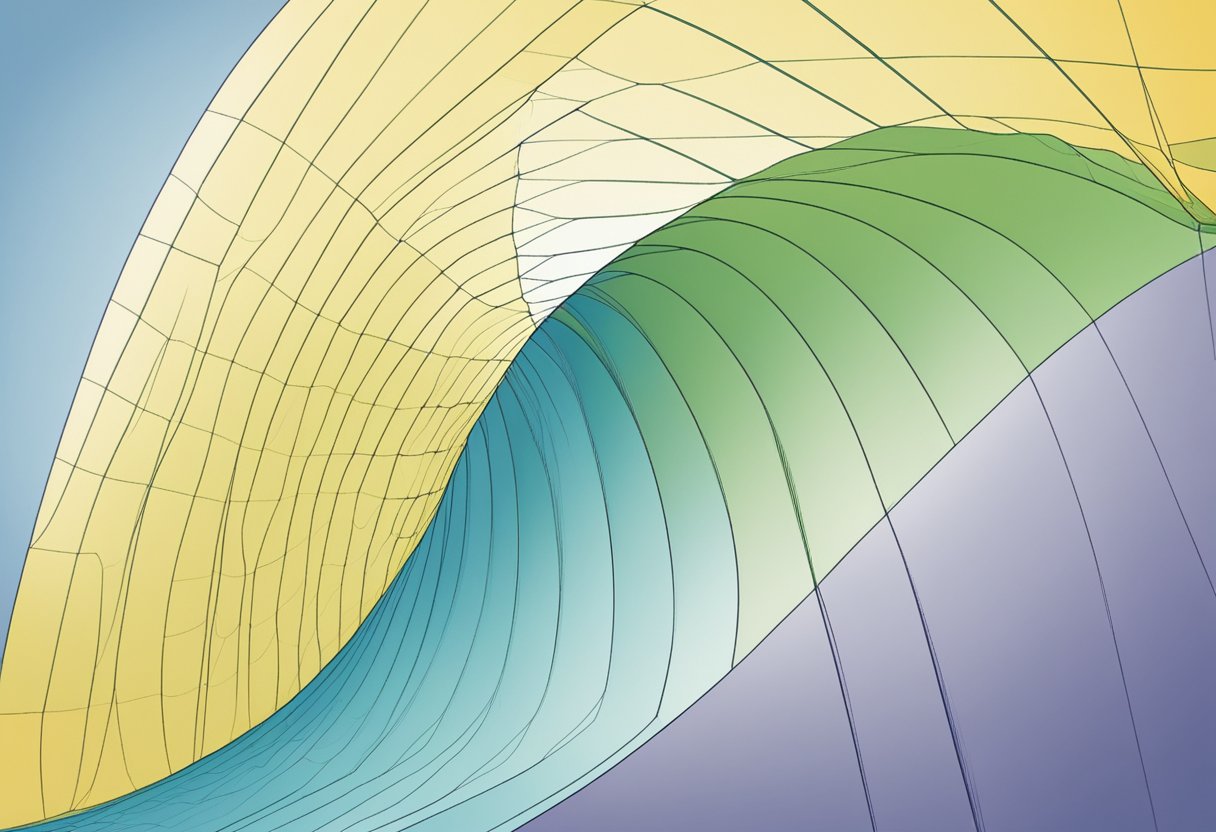
To find the range of a quadratic function, I first determine the direction in which the parabola opens; this is guided by the coefficient of the $x^2$ term.
If the coefficient is positive, the parabola opens upward, indicating that the range is either a value greater than or equal to the vertex’s y-coordinate.
Conversely, if the coefficient is negative, the parabola opens downward, and the range will be a value less than or equal to the y-coordinate of the vertex.
The vertex, representing the highest or lowest point on the graph of the function, can be found using the formula $(-b/2a, f(-b/2a))$, where (a), (b), and (c) are the coefficients of the quadratic function $ax^2+bx+c$.
My next step involves looking at the domain of the function, which, for all quadratic functions, consists of all real numbers. This means I can input any real number into the function to get a corresponding output. The relationship between the domain and the range is fundamental to understanding how the quadratic function behaves.
I keep in mind that the range is the set of all possible outputs (y-values). So, with a little bit of investigation into the graph’s vertex and direction, I can nail down the range of any quadratic function.
I invite you to follow me along as we demystify this topic further, and I promise it will be simpler than it might seem at first glance. Let’s dive right into the beautiful symmetry of quadratics.
Steps for Calculating the Range of a Quadratic Equation
When I determine the range of a quadratic function, I start by looking at its graph. A quadratic function is a polynomial of degree two, generally expressed in standard form as $f(x) = ax^2 + bx + c$ where (a), (b), and (c) are constants, and a is not equal to zero.

The graph of a quadratic function is a parabola. If the leading coefficient a is positive, the parabola opens upward, and if a is negative, it opens downward. Knowing this helps me to identify whether the function has a minimum or maximum value.
Coefficient a | Orientation | Vertex Point | Range Starts |
|---|---|---|---|
| Positive | Open upward | Minimum | Minimum ( y )-value going up to infinity $( +\infty )$ |
| Negative | Open downward | Maximum | Maximum ( y )-value going down to negative infinity $( -\infty )$ |
Here are the steps I follow:
- Write the function in vertex form if needed by completing the square: $f(x) = a(x-h)^2 + k$, where ((h, k)) is the vertex.
- Determine the vertex ((h, k)) as it gives the x-coordinate and y-coordinate of the turning point.
- Identify the direction the parabola opens based on the sign of
a(positive for upward, negative for downward). - Combine this information to establish the range:
- For upward-opening parabolas ((a > 0)), the range is $[k, +\infty)$.
- For downward-opening parabolas ((a < 0)), the range is $(-∞, k]$.
I always verify my results with a graphing utility to ensure accuracy. Every output value ((y)-value) that I can find based on an input value ((x)-value) lies within the function‘s range, forming the set of all possible outputs.
By following these steps, I can swiftly calculate the range of quadratic functions without confusion.
Conclusion
In this guide, I’ve taken you through the steps to determine the range of a quadratic function. The vertex plays a crucial role, as it indicates the highest or lowest point on the graph, depending on whether the parabola opens upwards or downwards.
To recap, if the quadratic coefficient ( a ) is positive, our parabola opens upwards and the range is $[k, \infty)$, where ( k ) is the y-coordinate of the vertex. Conversely, if ( a ) is negative, the parabola opens downwards, and the range becomes $(-\infty, k]$.
Remember, the axis of symmetry, given by $x = \frac{-b}{2a}$, is also a pivotal piece in understanding the shape and direction of our quadratic function.
It’s critical to plot out key features such as the vertex and axis of symmetry to accurately visualize the graph.
To effectively solve real-world problems or to perform well in academic settings, mastering the method for finding the range can be immensely beneficial. If my explanations have ignited an interest for more in-depth exploration or you need a quick refresher on these concepts, please refer to identifying the characteristics of quadratic functions.
I hope my insights have provided clarity and confidence in handling quadratic functions. With practice, these concepts will become second nature to you.
